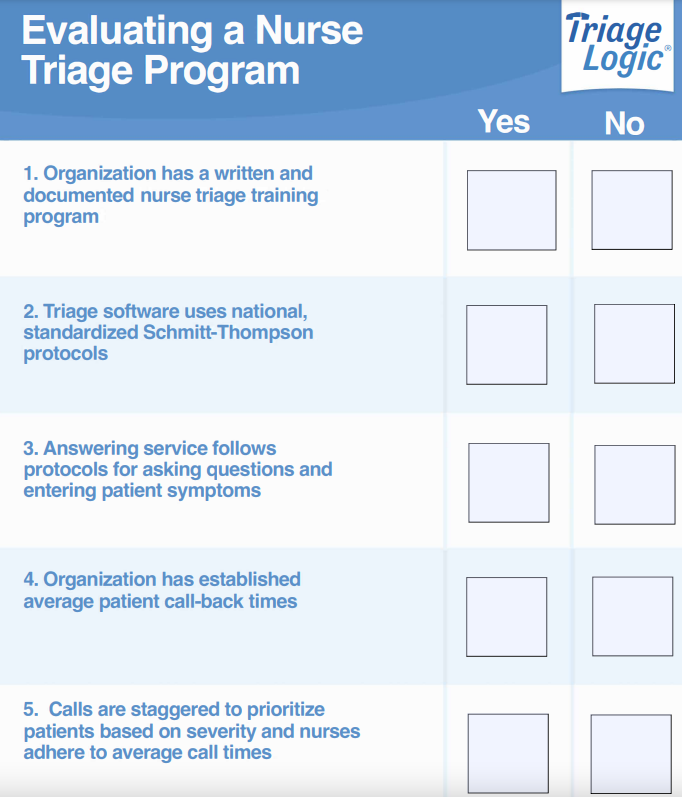Nurse triage is essential for managing patient calls both during and after normal business hours. If you outsource this service and aren’t satisfied with their current performance, you may decide to review other available options. Issues to consider include how triage nurses interact with your patients, whether they use appropriate protocols, customize your orders, etc. Here are the key features you should consider when evaluating nurse triage call centers like ours.
Do They Have a Nurse Triage Training Program?
Companies may claim to have established training programs for their triage nurses, but how transparent are they? Ideally, these call centers will share the material they use so that you have an understanding of their process. For example, we offer free courses through our Learning Center that are introductions to some of the more in-depth certifications that we offer, including our nurse triage software, 10-step process with patient callers, and medical message intake for nonclinical operators.
Do They Use Schmitt-Thompson Protocols?
These nurse triage protocols are considered the gold standard in healthcare, and for good reason: they offer symptom evaluation for all conditions, from pediatrics to older adults. They’re used to anticipate the worst-case scenarios that patients may be experiencing, and help guide them to the appropriate care in the appropriate windows of time.
Before nurses speak with patients, nonclinical operators are often the ones who field their initial calls. These operators may not have their own protocols to use, but they can take advantage of tools like TriageLogic’s MedMessage Assist that will help them identify whether their medical messages are complete and accurately convey the urgency of each patient’s needs. Establishing urgency is important because it relates to our next point.
Do They Adhere to Patient Callback Times?
Unfortunately, not all medical message intake is accurate — sometimes as low as 60 percent. That can put patients at risk for delayed care and poor health outcomes, all because triage nurses don’t have the information they need to know how quickly they should respond.
Improving message intake with MedMessage Assist is only part of the process. You also need to ensure that call center nurses are performing callbacks in the correct windows of time: 30-60 minutes for nonurgent calls, 15 minutes or less for urgent calls, and five (5) minutes or less for emergencies.
Do They Offer Analytics to Review Performance?
It’s easier to gauge nurses’ skill levels and identify areas for their improvement when you have relevant data. TriageLogic does this in two ways:
- Our nurse training software utilizes AI to customize caller situations and generate reports on how well nurses perform.
- Our nurse triage software includes analytics that measure call length, number of calls completed, and triage protocols used, which we can compare to our industry averages and see when there may be indications that nurses need additional coaching.
Are Their Tools Compliant and Permit Integration?
Being compliant with HIPAA may seem like a given for any company that claims to offer intuitive nurse triage solutions, but we’ve seen competitors that aren’t. Always verify that your patient data will be safe in the hands of those who record and share it.
It also helps if the triage solutions that are used are able to integrate with your existing software. That’s always been the case for ours, from our nurse triage training and software to our nonclinical message intake.
We also care a great deal about cybersecurity by pursuing SOC 2 Type 2 certification.
Let’s Discuss a Nurse Triage Program
If you think it’s time to expand your current nurse triage solutions, we want to help. When you’re ready, let’s discuss how a program with us could benefit both you and your patients.
About TriageLogic
TriageLogic is a URAC-accredited, physician-led provider of top-quality nurse telehealth technology, remote patient monitoring, and medical call center solutions. Founded in 2007, the TriageLogic Group now serves more than 22,000 physicians and covers over 42 million lives nationwide.






